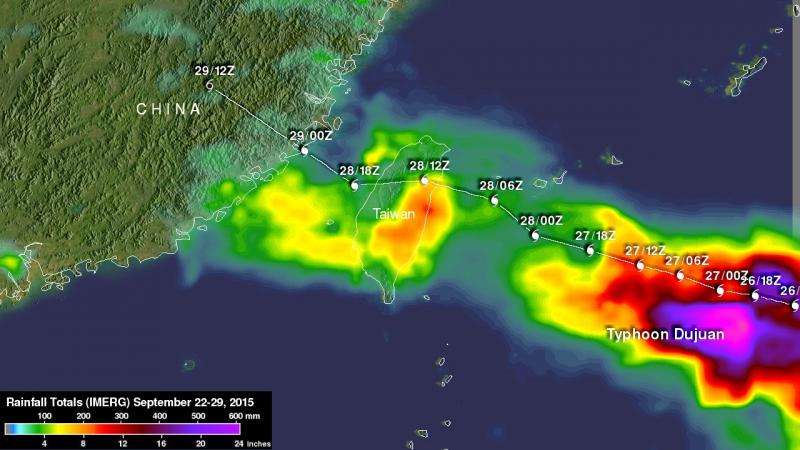NASA's GPM analyzes Typhoon Dujuan's large rainfall totals

The Global Precipitation Measurement or GPM mission core satellite measured the rainfall that Typhoon Dujuan dropped on Taiwan. Highest rainfall totals were over the northwestern Pacific Ocean, and along the eastern coast of Taiwan, south of where the typhoon made landfall.
Typhoon Dujuan formed in the western Pacific Ocean northwest of Guam on September 21, 2015.
A preliminary analysis of rainfall totals for the period from September 22 to 29, 2015 was generated at NASA's Goddard Space Flight Center in Greenbelt, Maryland, using NASA's Integrated Multi-satellite Retrievals for GPM (IMERG) data. The highest rainfall totals were found over the open waters of the northwestern Pacific Ocean where totals reached 600 millimeters (mm)/23.6 inches.
Dujuan intensified to a super typhoon with winds of 125 knots (144 mph) on September 27, 2015 as it approached Taiwan. The island of Taiwan experienced extreme rainfall and damaging winds with the passage of typhoon Dujuan. The typhoon also caused hundreds of injuries and at least three deaths in Taiwan.
That analysis indicated that Taiwan's heaviest rainfall totals of over 275 mm (10.8 inches) were located along the coast south of where Typhoon Dujuan made landfall.
After pounding Taiwan the typhoon started weakening before hitting China. When it reached coastal China, it dropped light to moderate rainfall over a large area while dissipating.
Provided by NASA's Goddard Space Flight Center




















